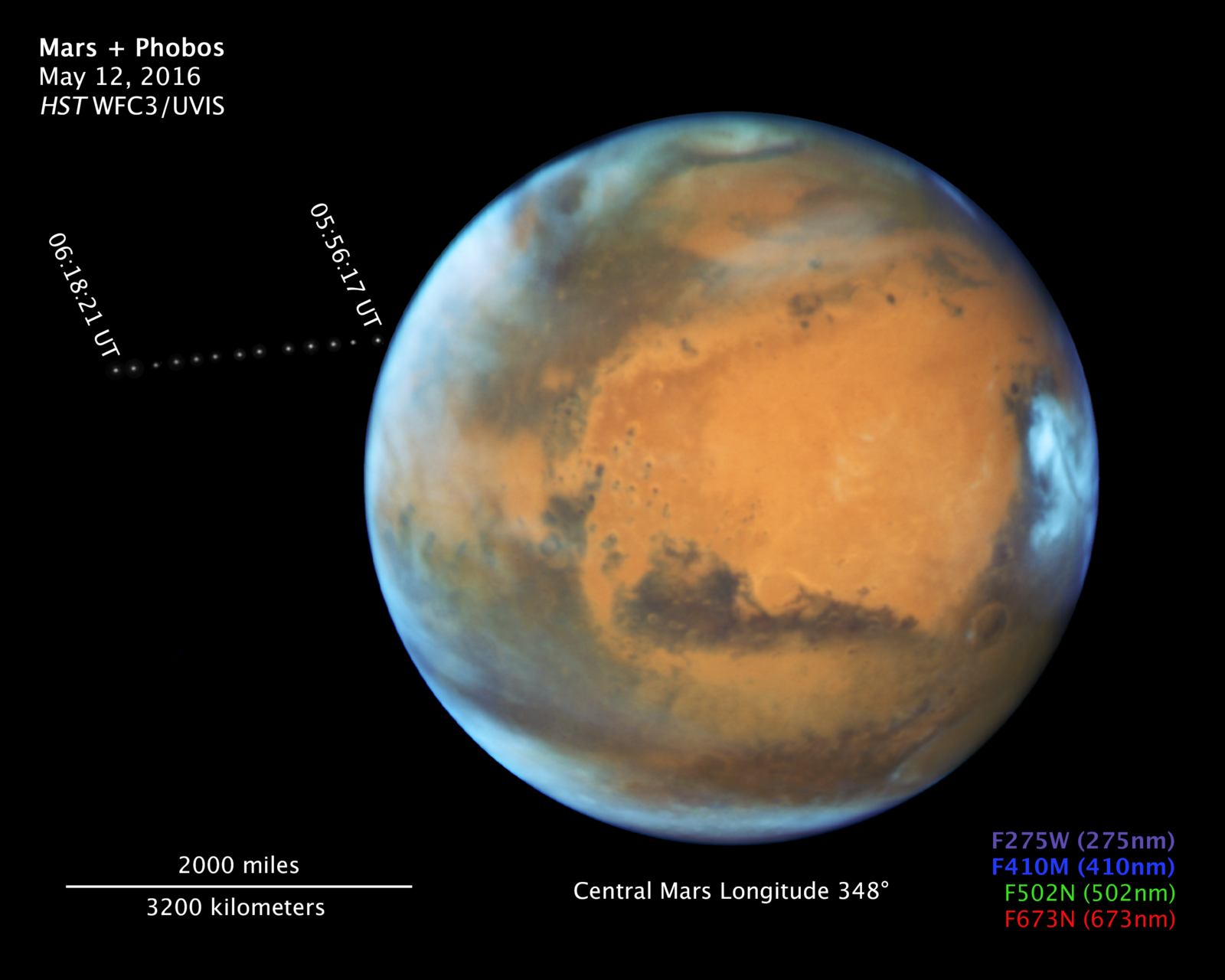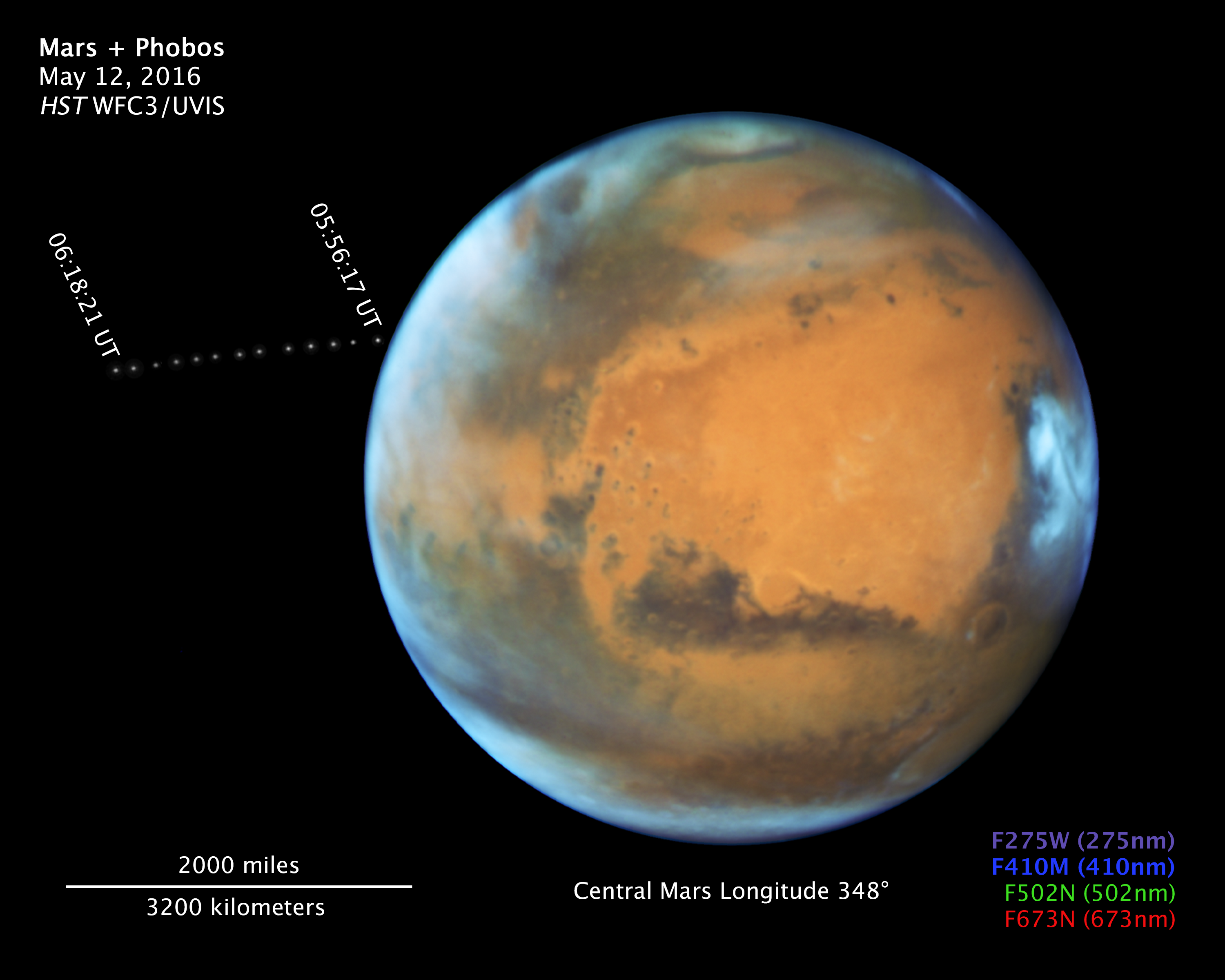Compass and Scale Image for Phobos and Mars
| Credit | NASA, ESA, and Z. Levay (STScI) |
|---|---|
| Language |
|
While photographing Mars, NASA’s Hubble Space Telescope captured a cameo appearance of the tiny moon Phobos on its trek around the Red Planet. Discovered in 1877, the diminutive, potato-shaped moon is so small that it appears star-like in the Hubble pictures. Phobos orbits Mars in just 7 hours and 39 minutes, which is faster than Mars rotates. The moon’s orbit is very slowly shrinking, meaning it will eventually shatter under Mars’ gravitational pull, or crash onto the planet. Hubble took 13 separate exposures over 22 minutes to create a time-lapse video showing the moon’s orbital path.
The Hubble Space Telescope is a project of international cooperation between NASA and ESA (European Space Agency). NASA's Goddard Space Flight Center in Greenbelt, Maryland, manages the telescope. The Space Telescope Science Institute (STScI) in Baltimore, Maryland, conducts Hubble science operations. STScI is operated for NASA by the Association of Universities for Research in Astronomy, Inc., in Washington, D.C.
Release Images:
NASA's Hubble Sees Martian Moon Orbiting the Red Planet (Unlabeled)
Compass and Scale Image for Phobos and Mars (Labeled)
Time-lapse Video of Phobos in Orbit around Mars (Non-annotated) - GIF
Release Videos:
Time-lapse Video of Phobos in Orbit around Mars (Non-annotated and Smoothed)
Time-lapse Video of Phobos in Orbit around Mars (Annotated and Smoothed)
Related Links:
NASA's Hubble Sees Martian Moon Orbiting the Red Planet (2017 Release)
NASA's Hubble Portal




























